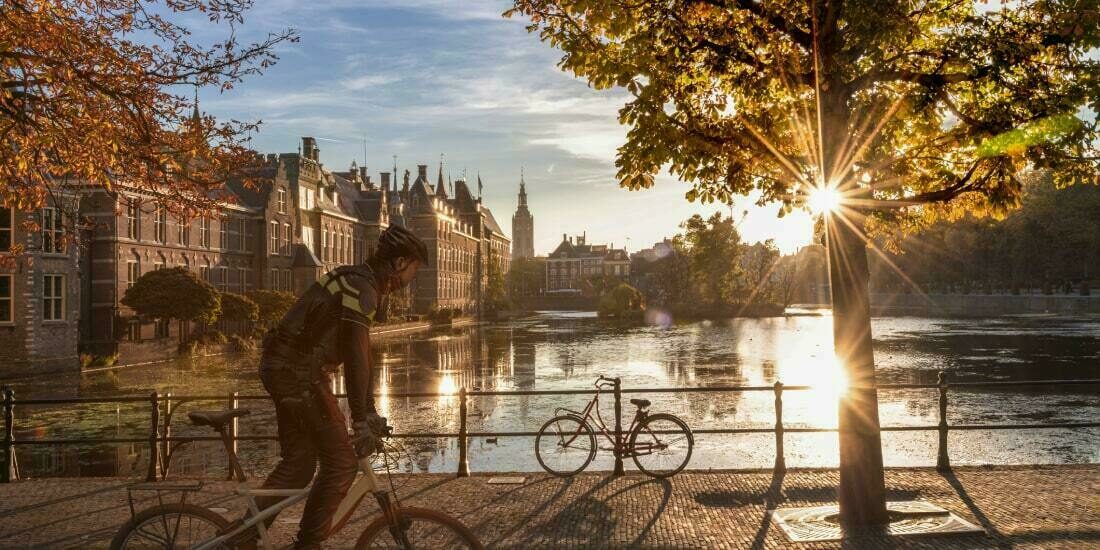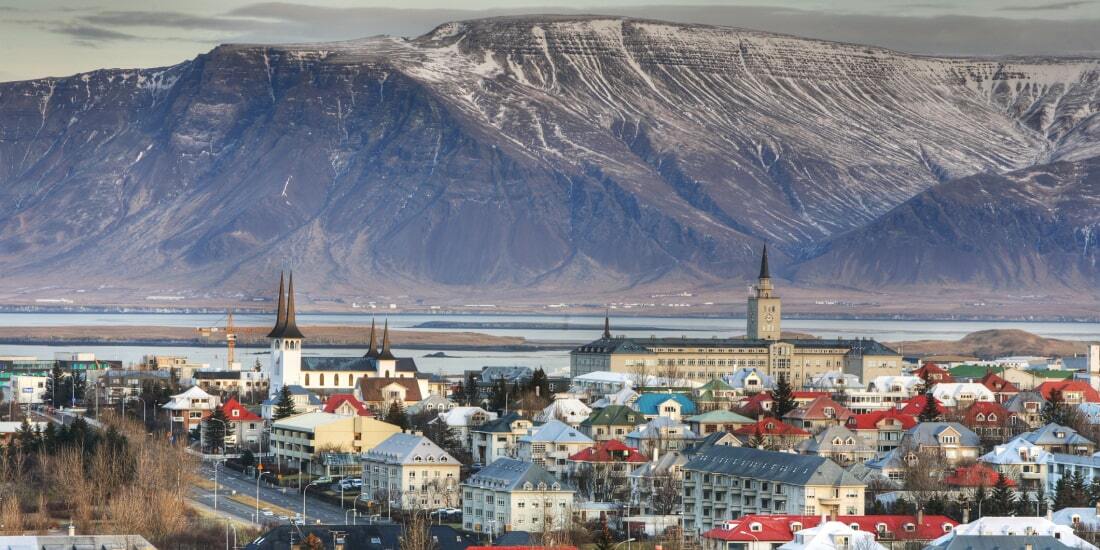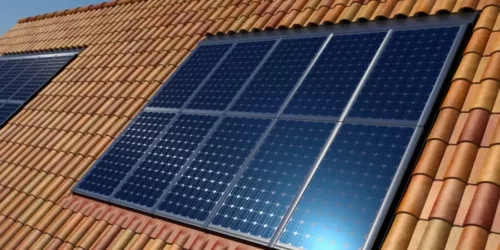Green Cities - The Most Sustainable in the World
- Our top five greenest cities
- How they make use of sustainable means
- Ways in which you can use renewable energy
When it comes to sustainability, it’s interesting to see how different cities compare. While we’re aware of how our own country aims to be carbon neutral by 2050, how are green cities across the globe being eco-friendly? What sustainable measures are they implementing and how are they making the most of renewable energy systems?
We’ve compiled a list of some of the most sustainable green cities in the world and how they’ve become sustainable. If it inspires you to make green changes of your own, we’ve provided a few ideas in the final section.

What's On This Page?
Click the links below and head straight to a specific section of the article.
Top 5 Greenest Cities
Stockholm (Sweden)

If you know anything about Sweden, you can see why it’s at the top of our green cities. Stockholm was the first city to be awarded the title of European Green Capital by the European Commission in 2010. The country met the government’s 2020 target of 50% renewable energy by 2012 and its reliance on renewable energy is admirable. This was supported through the European Union which surpassed 138 GW of solar energy in 2020, almost 55% were residential and commercial rooftop installations. The efficiency and long-term cost of solar roof tiles has attracted many to go greener.
Green cities rely on renewable energy, and Stockholm is no different, but while energy consumption is relatively high in Sweden, emissions are very low. 75% of electricity is produced by both hydroelectric and nuclear power, while 17% comes from wind. Bioenergy is mainly used for district heating, meaning they have decreased greenhouse gas emissions considerably through sustainable means.
Stockholm has ambitions to be fossil fuel free and climate positive by 2040; a true pioneer of green cities. The eco-friendly city has taken a more holistic approach to encompass transportation, tourism and hospitality, all while being considerate of the needs of a growing population.
The country has an abundance of natural wood, so this is used sustainably in as many ways as possible, including for fuel and domestic. Trains and buses have been using renewable energy since 2017, and the city aims to provide the most sustainable public transport in the world.
They are forward-thinkers, being the first country in the world to pass an environmental act in 1967 and to host the first UN conference on the global environment in 1972. This spurred other green cities into action.
The graph below shows how much renewable electricity generation some of these countries have developed over the last few years. The good news is that most of these countries have been on the rise, despite the pandemic being in the way during this time.

Copenhagen (Denmark)

The development of green cities has been ongoing for some time. Renowned for its cycling infrastructure and well maintained cycle paths, Copenhagen is incredibly eco-friendly. By implementing over a hundred years of development, they’ve made cycling a normal way of life. A third of all fossil fuel transportation emissions have been removed by doing this, and with further investment going into electric and hydrogen-powered cars, this will only improve. As of 2023, this sustainable city started testing zero emission zones, only accessible to electric and hydrogen vehicles.
A common theme these green cities have is in how they’re reducing their carbon footprint. Copenhagen has a Carbon Neutral by 2025 Plan, and they are hoping to be the first carbon neutral capital. They also raise awareness of the importance of adapting to rising sea levels in order to have a more climate aware public, as seen with the introduction of visually striking elevated public benches.
In terms of heating, district heating systems are at the top of environmentally friendly options. Green cities use what they have to their advantage. For Denmark, sea water is used to chill cold water pipes. Combined heat and power systems capture and reuse heat that would otherwise be lost. Copenhagen is looking at converting to a biomass system to further reduce emissions.
Retrofitting, modernising older buildings with new technology to make them greener, is another way in which Copenhagen will reach its carbon neutral goal. One of the best ways is by implementing green roofs, which keep green cities cool, complement biodiversity and reduce rainwater runoff. Green roofs have been integrated in new buildings since 2010 in an effort to be more eco-friendly.
Denmark is also a leader in renewables, as electricity generated by wind power was at 47% in 2019, higher than previous years. The sustainable wind farm systems are both government and community-owned, which benefits everyone by keeping sustainability in green cities an open interest.
Vancouver (Canada)

Recycling programmes are often implemented by green cities. Recently touted as the greenest city in the world, Vancouver is highly praised for its unbeaten recycling rate (over 60%). They host reuse and recycling drop-off events in their goal to become a zero waste community by 2040. As well as this, they have the lowest greenhouse gas emissions in North America and have planted 122,000 trees since 2010.
Their reliance on renewable energy is impressive. Since 2019, renewable electricity production sits at 90% thanks to their use of hydroelectricity, but they won’t sit still as the city council recently voted to raise this to 100%. Like other green cities, the Canadian landscape allows for these colossal dams to be built, which means they’re able to make the most of their environment without polluting it.
As with all green cities, investment in transportation is key. To become more of an eco-friendly city, Vancouver wishes to invest in its mass transportation network, with an aim of 50% of all passenger trips to be made by public transport by 2050. More people are expected to be living in the city in future years, and the infrastructure needs to be able to cater for this.
Vancouver is also looking at retrofitting, as buildings are their largest source of emissions (almost 60%). Green cities recognise the need to improve the efficiency of older buildings, which includes upgrading old windows, doors and heating systems to improve energy efficiency. The green city’s overall aim is to bring greenhouse gas emissions to 5% lower than 1990 levels and to run on 93% renewable sources.
Berlin (Germany)

Sustainable lifestyles are heavily encouraged in green cities. Berlin has cut CO₂ emissions by a third since 1990 and aims to be climate neutral by 2050. They hold green tours, which promote the education of sustainable practices and teach about the importance of biodiversity. Like Copenhagen, Berlin has also implemented an Environmental Zone, where only vehicles with certain exhaust emissions standards can enter. They’ve increased tax on polluting items, like petrol, in an attempt to bring down emissions further and cut car use.
While Vancouver has an unrivalled recycling rate, Germany’s bottle recycling system is not to be scoffed at. This scheme is forward thinking for all green cities. The recycling deposit scheme gives €0.25 for every plastic bottle recycled. Empty bottles, including glass, are collected for cleaning, processing and reuse. In Berlin, glass bottles can be left next to bins for collection. The scheme avoids 3 billion disposable beverage containers being dumped into the environment every year.
Green cities often win awards. Ranked 3rd globally for sustainability in 2017 by Arcadis, Berlin has its public transport to hail. Car ownership in Berlin is much lower than the general German population, as buses and trains are so well connected. Their cycle lanes are being improved, with comprehensive networks in the pipeline. Rent a bike schemes are encouraged, as is sharing transport.
Other sustainable systems have been in use for years. A greywater recycling system for 250 inhabitants has been in operation since 2006. This was the first of its kind in Germany, and proves that eco-friendly initiatives can make green cities grey ones too. Also, Berlin has made it mandatory from 2023 for new buildings to utilise solar panels.
Reykjavik (Iceland)

The leading renewable energy capital in the world, Reykjavik is a geothermal powerhouse. While it has a small population, it manages to use geothermal and hydroelectric power for citywide district heating. Nearly all of this green city’s needs are met (95%) through geothermal power, which is the largest of its kind in the world.
Aiming to be carbon neutral by 2040, Reykjavik is limiting its urban sprawl by improving public transport efficiency, as 60% of emissions are through transport alone. They have the aim for all public and private vehicles to be powered by green energy by 2040, which is an example for green cities everywhere. To increase the connectivity of transport and decrease the reliance on car use, the city is looking at light railways or rapid bus transit systems.
The main reason why Reykjavik was included in this list of green cities was because of its natural geothermal use. Like Vancouver capitalising on its environment through renewable hydroelectric dams, Iceland is in a lucky enough position to utilise the naturally surrounding heat, which makes up for their little worth in solar panels due to their wintery conditions. They are the global centre for renewable energy research, being involved in geothermal technical assistance and wider education. Green cities are so important in teaching us how to be more sustainable.
The vast majority of heating and electricity is generated by renewable energy, meaning Reykjavik has one of the lowest carbon footprints of green cities in high-income countries, making it an incredibly sustainable city.
How You Can Help Being Greener
Spurred on by the progress of our European (and transatlantic) neighbours? We’ve included some ways in which you can become more sustainable at home by following the example of these green cities.
Solar Panels
These capture the sun’s energy to produce electricity, reducing your reliance on your energy supplier and the national grid. They can even be integrated into electric boiler systems to offset their cost.
See how much solar panels can cost you.
EV Charging
Electric vehicles are becoming more and more prominent. With new petrol and diesel cars being banned after 2030, you can reduce your emissions from today with an electric car. Plus, it’s cheaper to charge your electric vehicle at home.
Find out how much a home EV charger will cost.
Windows & Doors
With many cities looking at retrofitting older homes to bring them up to modern energy efficient standards, why not look at bucking the trend early and getting your home up to scratch? Carbon neutral goals can only be achieved if all homes are as energy efficient as possible.
Get quotes for efficient windows and doors.
Heat Pumps
Our UK heating systems need a massive overhaul, as retrofitting will also be one of our biggest goals. Gas boilers are being phased out from 2025 and renewable alternatives are being looked at. One of the easiest ways you can reduce your emissions is by installing a heat pump, whether air or ground source.
Related articles
View all Solar Panel articles
A Complete Guide to Caravan Solar Panels

Are Solar Panels Worth It in Wales?

Project Solar UK: Company Overview

Battery Storage for Solar Panels Explained

Solar Panel Kits Explained - Everything You Need to Know

Are Solar Roofing Tiles Worth It?

A Complete Guide to Roof Integrated Solar Panels







